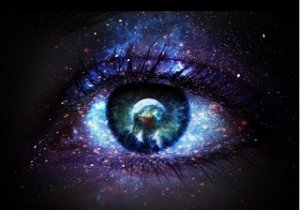
In 1888, Charles H. Hinton and the 4th. Dimension
The work of Charles H. Hinton of 1888 had three new aspects still today, little or almost nothing touched by science: the end of the idea of absolute time, the question of consciousness (not only as historical) and a new conception of spirituality.
or almost nothing touched by science: the end of the idea of absolute time, the question of consciousness (not only as historical) and a new conception of spirituality.
Kant’s idea that the property of being in space, as being a quality of any definable object, this will be important for empiricism and mechanicism in modernity, has as idea the apprehension of objects definable by our mental work, so the first idea arising it will be a way of seeing the mind as a mechanism.
Hilton makes this ideal of time and absolute space, derived from Kant, be rethought.
For this he discusses Kant’s idea of the property of being in space, as not so much a quality of any definable object, but as a means by which one obtains a grasp of definable objects, being a condition of our mental work.
Hilton does an ingenious job with the idea that space is a veil by which we see objects, in a positive reading of Kant, makes it a means by which we learn what is, that is, space is an instrument of the mind through and it is important to note that this was done well before the quantum view that time and space are relative, that Heisenberg was the first to announce it.
From this will be derived the idea that our consciousness, starting from the consciousness of ourselves (which will be the in-itself of Hegel) and our feelings will have a kind of direct and absolute value, to speak in the language of idealism, can not have values subjective, but only objective by connected and object-oriented (Hegel’s of the-self).
Divide this form of consciousness into two parts: “To some extent we can filter our experience of the external world and divide it into two parts.
We can determine the elements of the self and the realities “(Hilton, 1888), thus by the models of representations and” only by models and representations made in the material of the brain that the mind knows external changes “, a whole set of these models will form the representation in the mind of the world.
That is why Hilton will affirm: “it is often taken for granted that our awareness of ourselves and our own feelings has a kind of direct and absolute value,” so it is not by interacting with this world, nor by the feelings derived from it that we form the model, but by the representation of an “absolute” model
Hilton states about consciousness: “It turns out that the thought and feeling processes are connected to the brain. If the brain is disturbed, thoughts, visions, and sounds enter the consciousness that has no objective cause in the external world, “or whether it is possible by stochastic and random processes, or even effects with special construction for this, one can create not only the sensation, but also the relation with the objects, and are subjective.
Hilton says of this form, which is now called interactive, that the relation to objects: “They would be thoughts and imaginations, not observations of external facts” (Hinton, 1888), neither being hallucinations nor virtualities.
In the absence of categories Hilton himself will resort to the ether (aether), but today we could upgrade as fractals, intermediate dimensions between the line and the plane, he will say that it is even in this dimension, but in creating the idea of the fourth dimension, also suppose something between the plane and the cube, its tesseracto, that today is the hypercube.
Hinton, Charles H. (1888) The new era of thought. London: S. Sonnenschein & Co. (Chap. 7, 9, 10 and 11)









